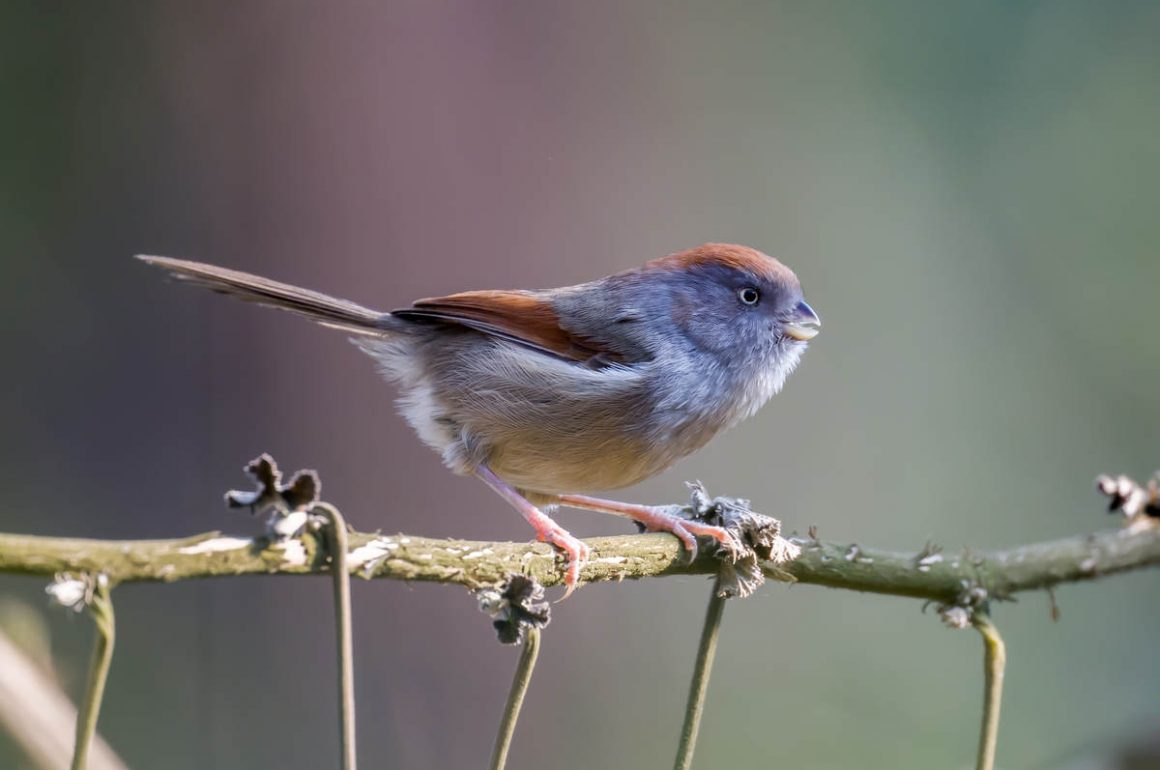
The last time I birded Longcanggou, a national forest park in China’s Sichuan province, was in November 2021. Now, 14 months later, the place has changed – unfortunately, for the worse, at least as birding is concerned.
Longcanggou has two main birding spots – the actual national forest park and another, which I can unfortunately only describe as “not the actual national forest park”. Last time, the first one was officially inaccessible to tourists, but due to the local contacts of my guide Bella from Alpinebirding, we got in there anyway. Today, the national forest park is open to tourists – which in China means large groups of people in similarly large buses. So, on the recommendation of a knowledgeable local, we had to skip this part this time – due to the traffic and the people, it is no longer a good place for birding.
The other part was still accessible and fairly empty, and that is where most of the photos shown below were taken. However, apparently, from March 01 on, this part will be ticketed – and my guess is it will soon be too crowded for good birding as well.
So, maybe this was the last time I birded Longcanggou – a somewhat sad story that is likely to repeat itself at many other Chinese birding locations as well. Here’s what birders might miss in the future (worst case), or share from afar with thousands of disinterested Chinese tourists who mainly come to take selfies of themselves in front of a mountain landscape (slightly better case).
Shockingly, the Ashy-throated Parrotbill apparently is a species heavily hunted for bird fighting in Guizhou Province, China (source). It even seems that the pliant researchers indirectly support the fighting (even though it has led to the species being one of the most hunted ones in that province) by developing a quick method to identify the sex of the bird (the males turn out to be somewhat bigger and thus presumably the more coveted fighters). Shame on the researchers.
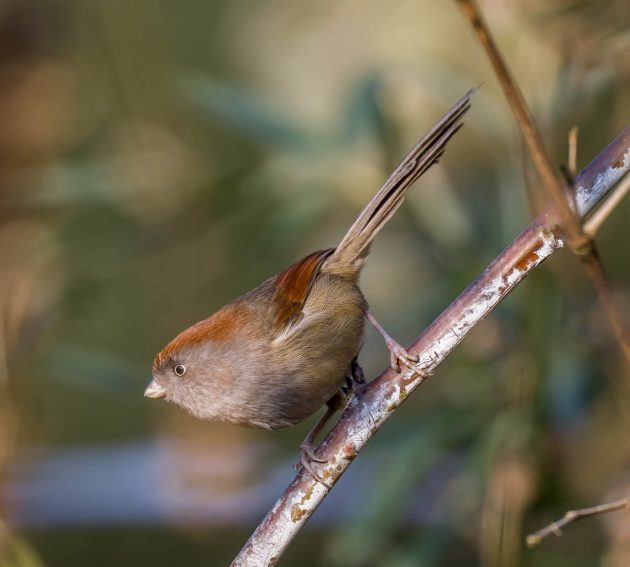
If being hunted by evil humans was not enough, Ashy-throated Parrotbills are also hosts of the parasitic Common Cuckoo. Apparently, they use the presence of their own eggs as a cue for recognizing parasitic eggs – so without the presence of their own eggs as a template they fail to recognize a parasitic egg. Some individuals even rejected their own eggs when they were in the minority.
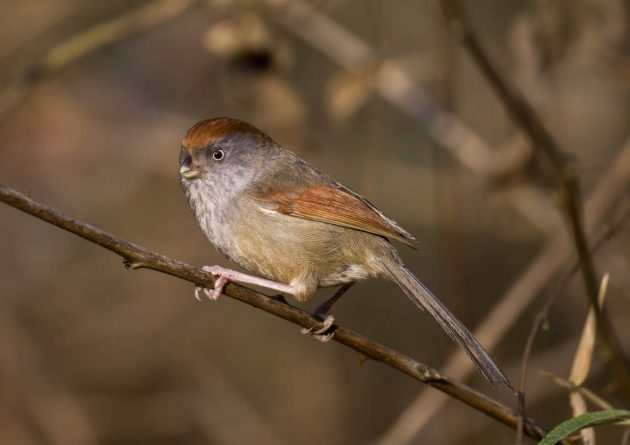
Another approach that Ashy-throated Parrotbills apparently utilize is to diversify – some females lay white, some blue eggs. So to avoid instant rejection, the parasitizing cuckoo also needs to diversify and indeed tends to lay eggs in host nests with eggs of the same color (source).
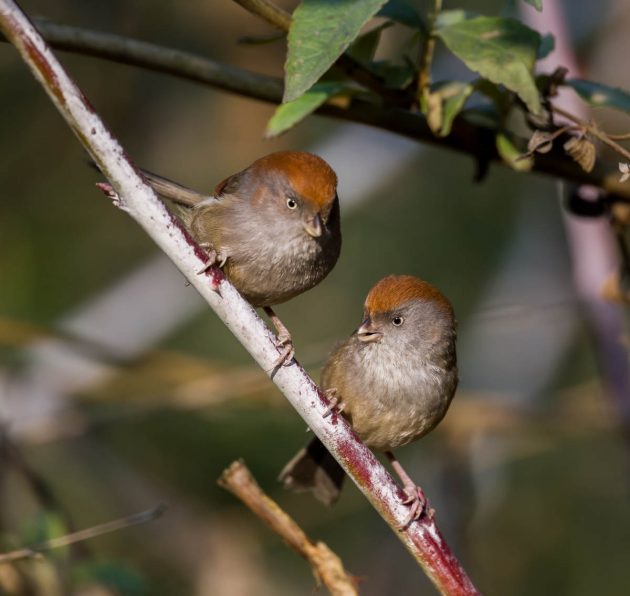
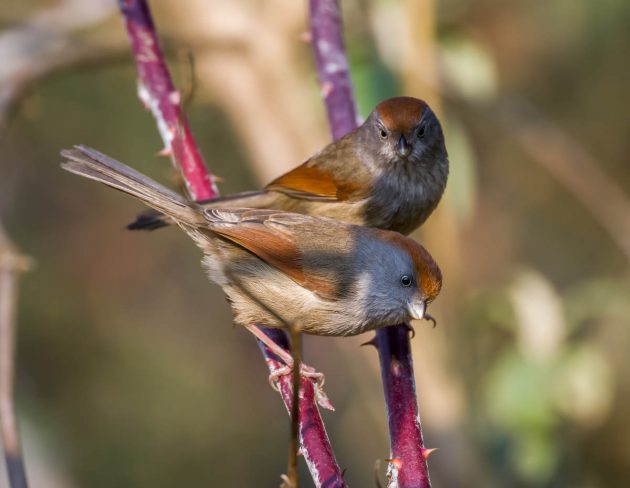
The eBird style gurus attest male Blyth’s Shrike-Babblers to be “smartly attired”.
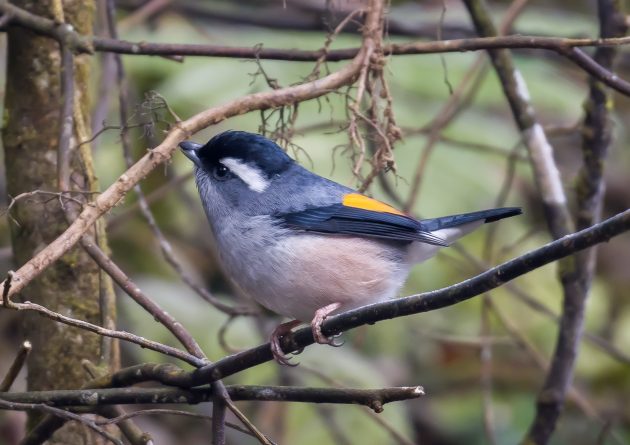
The females are described as “much more faded” (maybe from the housework?).
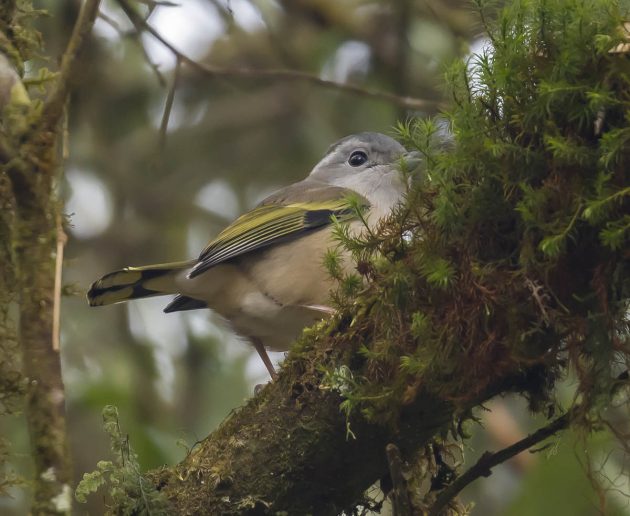
The HBW actually (rather clumsily) calls it the Himalayan/Blyth’s/Dalat Shrike-babbler, indicating a future split. I prefer the “Blyth’s” name, for two reasons: on the one hand, it allows me to namedrop one of my favorite (and relatively obscure) British bands, Blyth Power.
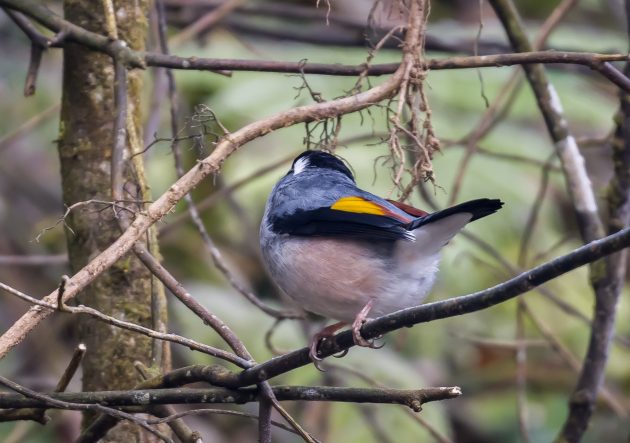
The other is to mention that the name commemorates Edward Blyth (1810-1873), who published the first description of the species. In his life, according to Wikipedia, he had a mental breakdown and had to be kept in a private asylum, he later took to drinking, and he was once held for assaulting a cab driver. But haven’t we all done these things?
The Eurasian Wren isn’t actually a particularly specific bird to Longcanggou – I have seen it in my parents’ garden in Germany as well.
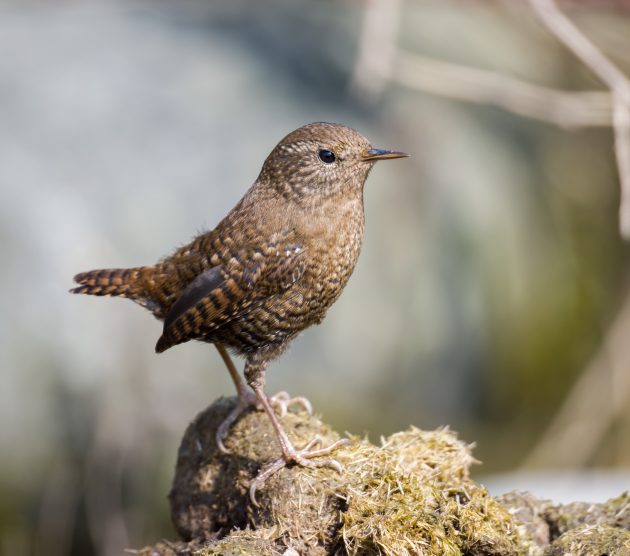
The tail of the wren can assume the position of a spoiler in a sports car for men with an exaggerated desire to display their masculinity (and usually a beer belly as well).
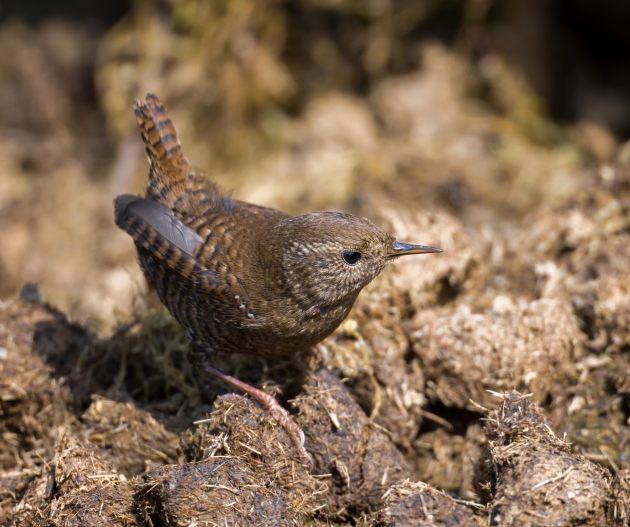
Depending on whether it is in its manic or in its depressive phase, it either “sings from a fairly exposed perch” or is “rather mouselike, creeping in brambles and understory” (eBird).
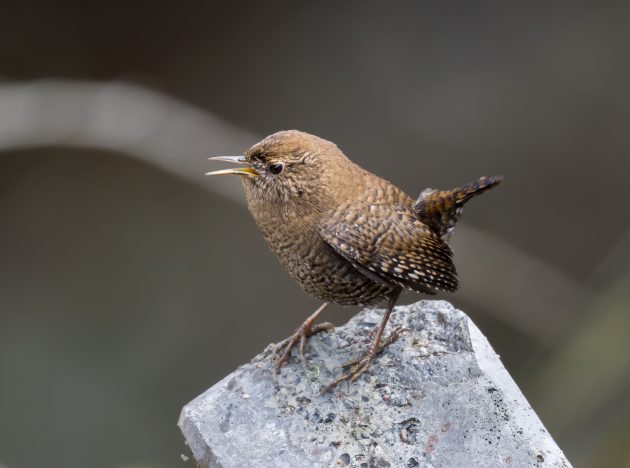
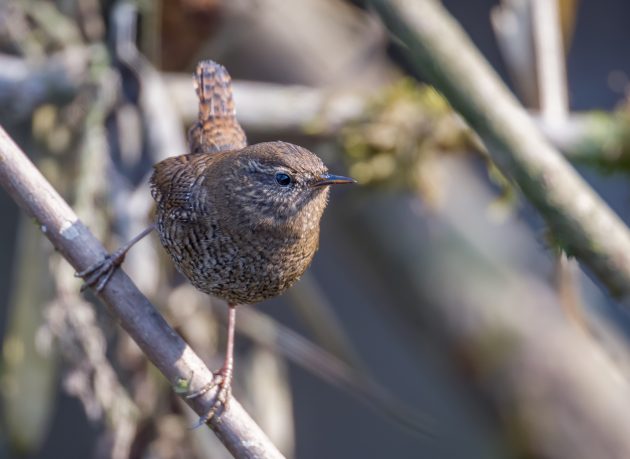
Different from many humans, they tend to be quite polite – in a study, male wrens avoided overlapping their own song over the playback of another male by timing the start of their song accordingly.
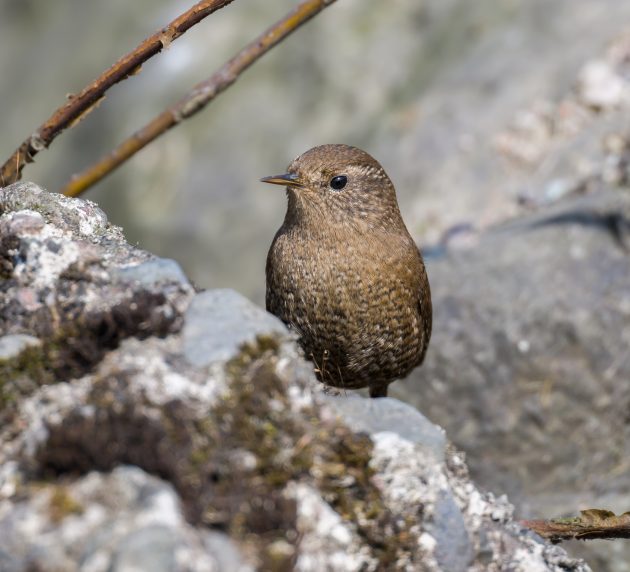
Unfortunately, some other species do not seem to listen to the wren much. Great Tits (sorry, no joke this time – these only come with photos) responded much more to mobbing calls of nuthatches than to that of wrens (source). However, instead of a tit joke, some wren pornography.
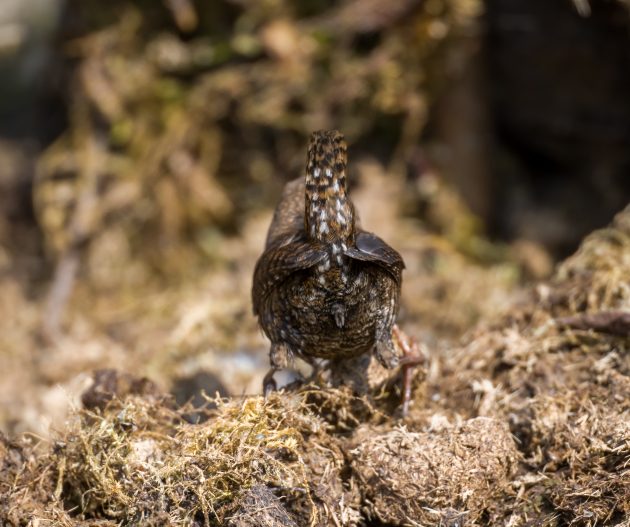
The HBW lists a total of 8 species of forktails, 5 of which can be seen in China, so having two here at Longcanggou is not bad. The Little Forktail is not named after Arthur D. Little, the founder of a management consultancy I once worked for in a fairly unsuccessful way, but rather for its smallish size – who would have thought?
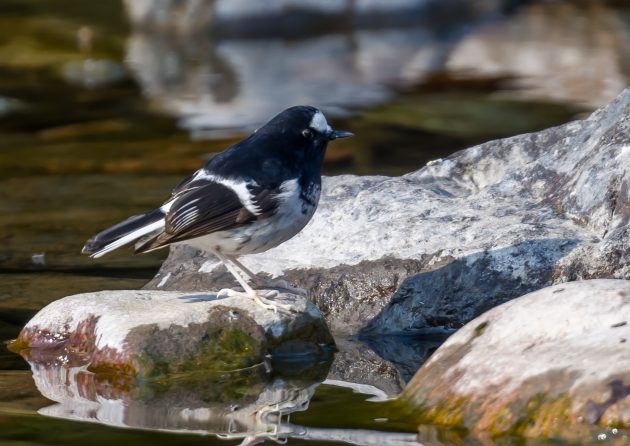
While it is indeed a forktail, the tail is not particularly forked (it is simply too short for that). eBird mercilessly highlights this, doing the species’ self-confidence no favor: “the smallest of the forktails and the only one lacking a long tail”. As a result, many (particularly male) Little Forktails work very hard in their careers, exhausting themselves in the ambition to buy an expensive sports car that can compensate for their short tail.
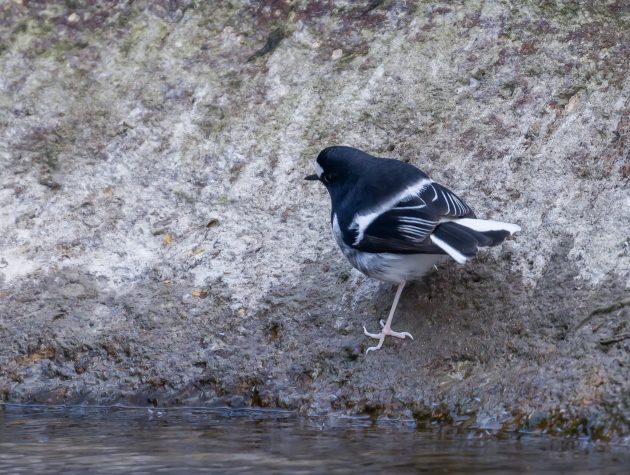
The Latin name scouleri is derived from Prof. John Scouler (1804-1871), a Scottish surgeon-naturalist, botanist, and explorer. Curiously, shortly after he had settled down as a medical doctor in Britain, he was appointed professor of geology and natural history and mineralogy and later (at another university) of zoology and botany as well. I guess people were more flexible then.
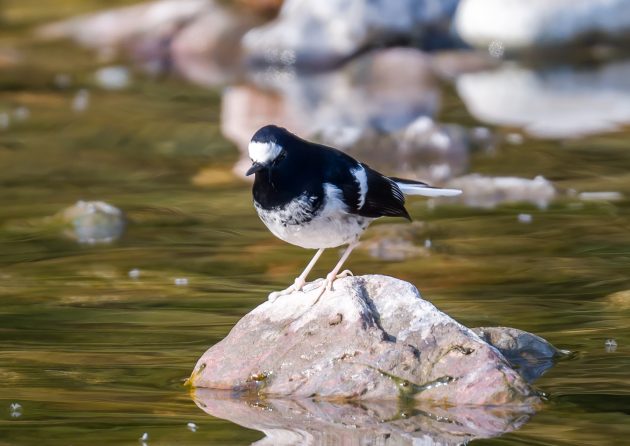
In what seems like a fairly pointless study to me, Little Forktails in Nepal were found to forage around mid-river rocks 55% of the time, marginal rocks 29% of the time, and at other locations 16% of the time (source: HBW). The study does not state where the birds took their smoking breaks.
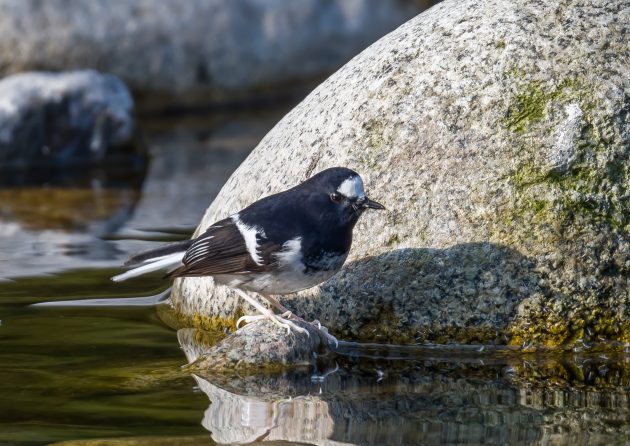
In contrast to the Little Forktail, the Spotted Forktail rarely lusts for sports cars – no need, as even the bored eBird reviewers are impressed by its “stunning galaxy-like white spotting on the back”.
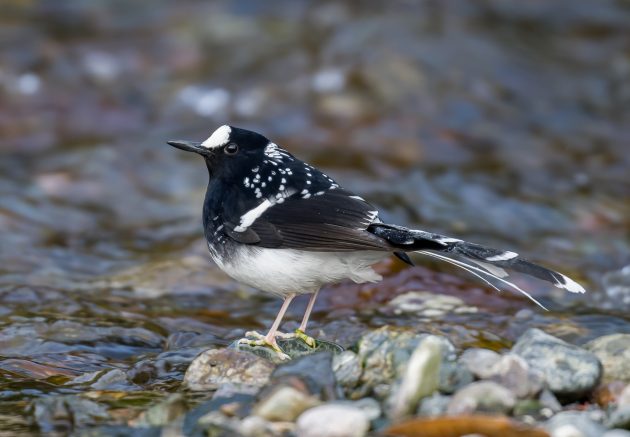
And its tail truly is forked.
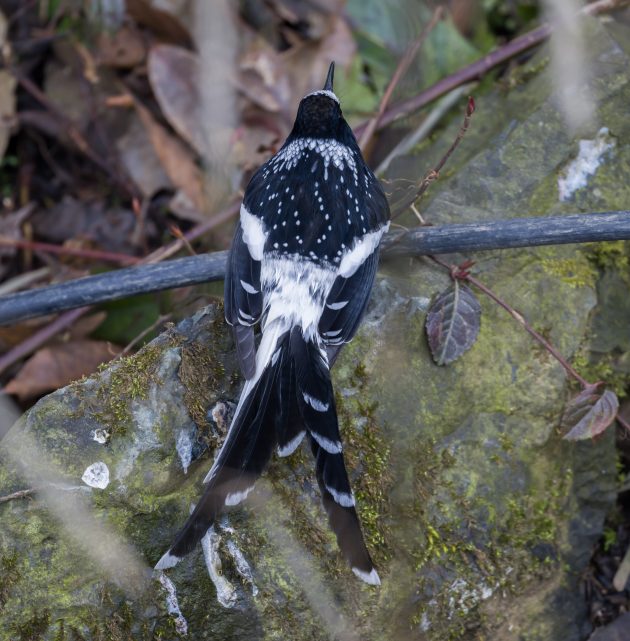
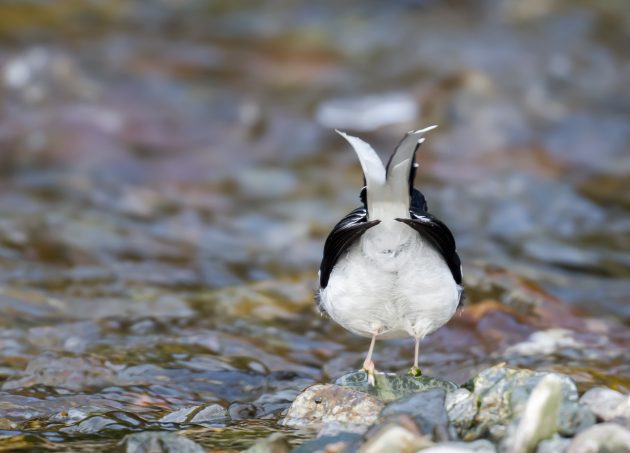
Sharing the same river with another forktail (the Little Forktail) is facilitated by both species having different foraging strategies and different prey items, as described here. For example, while a Spotted Forktail readily ate from the Snickers bar I handed it, the Little Forktail loudly requested a Mars bar (which unfortunately I did not have with me). This resource participation, as the ornithologists call it, allows for relatively peaceful coexistence as long as both brands of confectionary are available.
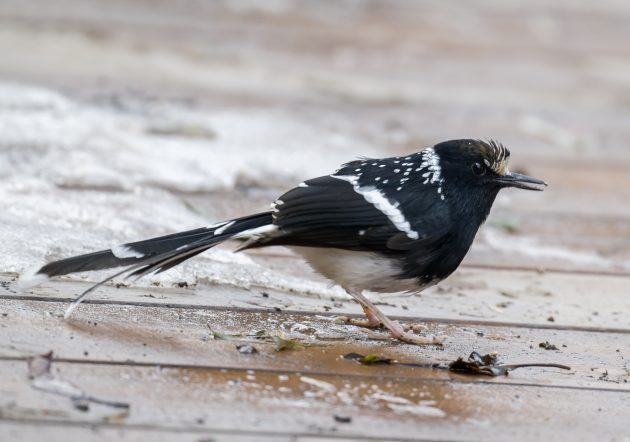
In the German language, the Latin species name maculatus (“spotted”) has a negative ring to it as the German word Makulatur describes waste paper consisting of worthless printed paper. I am sure you wanted to know this.
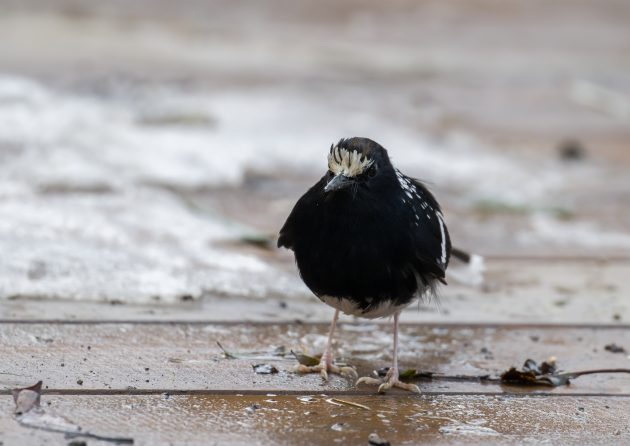
As the name suggests, the Great Barbet is the largest of all barbets. The busybodies of eBird (who presumably spend a lot of time doing sports) describe the species as sluggish – but then again, they also state that it is shy and “tends to stick to dense forest canopy, where it is difficult to see”, something that my photos seem to not exactly illustrate very well.
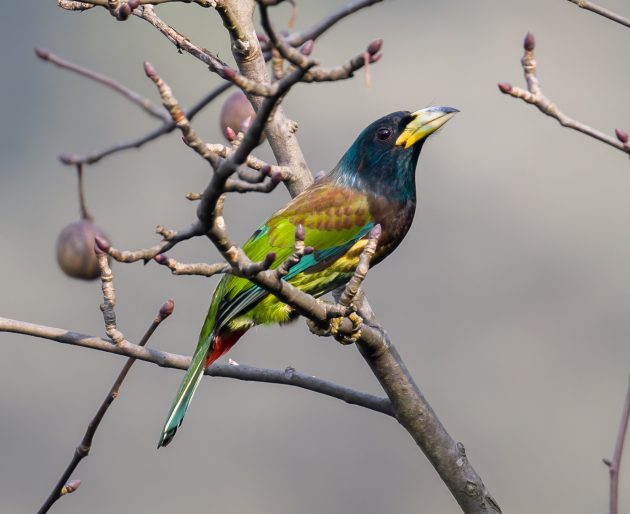
The Latin species name virens (“green”) only covers a small part of the species’ color spectrum – which somehow it pulls off without looking gaudy. Respect from a person who usually thinks one color (black) is sufficient.
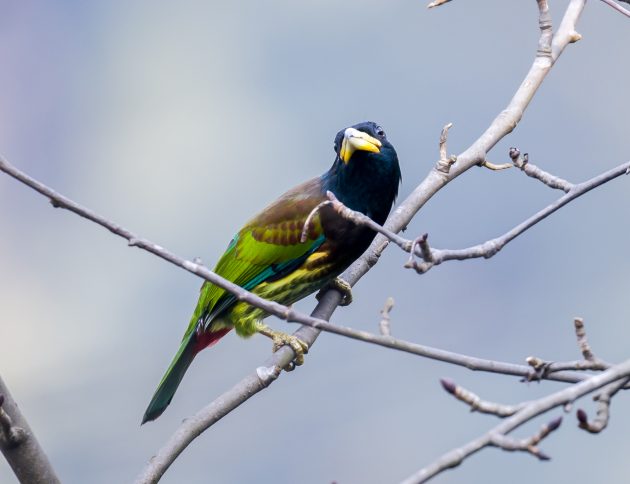
Sadly for such a beautiful bird, the only research paper related to it was one with the rather unappetizing title “Two new species of feather mites (Acarina: Psoroptidia) from the Great Barbet, Psilopogon virens (Piciformes: Megalaimidae)”. Maybe it is easier to get grants for work on feather mites than on birds? Greater economic implications, e.g., damage to domestic chickens?
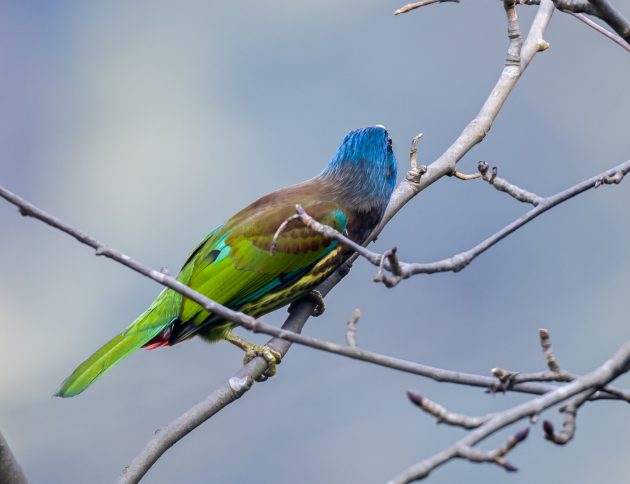
Unfortunately for birders who like a bit of logic, neither the Golden-breasted Fulvetta (directly below) nor the Gold-fronted Fulvetta (further down) are part of the genus Fulvetta, which comprises 8 species (source: Wikipedia).
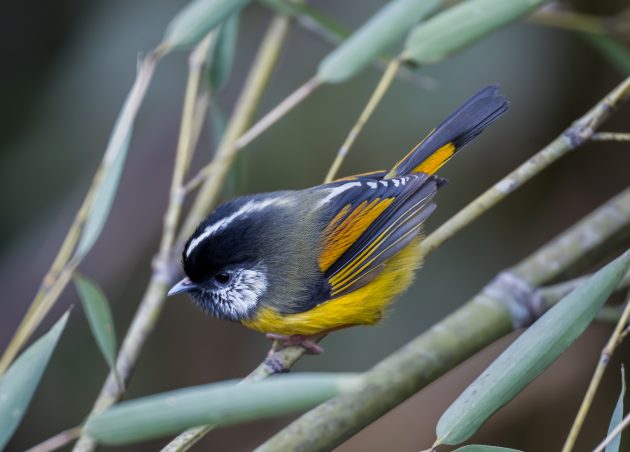
This does not keep eBird from calling the Golden-breasted Fulvetta a “stunning little bird, extremely brightly colored for a fulvetta”.
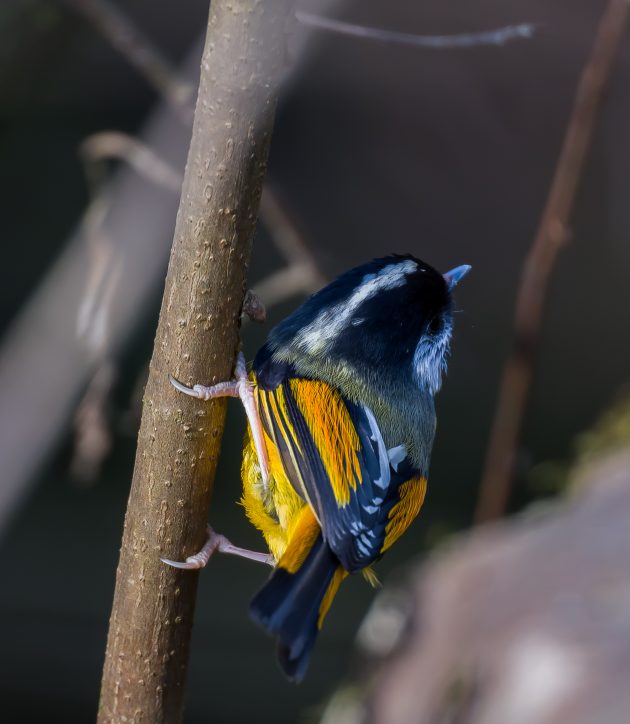
A nice drawing of the bird can be found here.
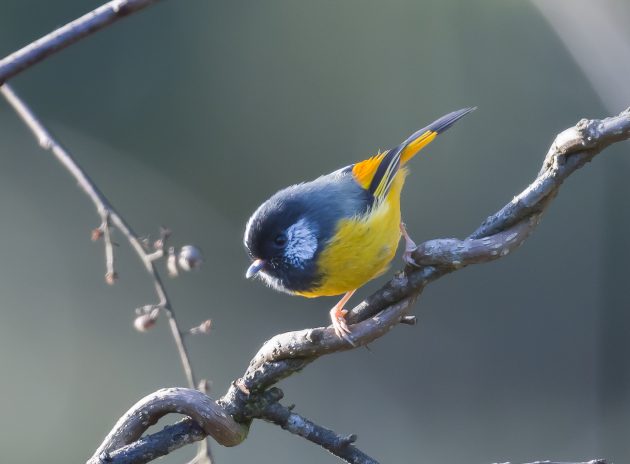
The HBW section on distribution states that the bird is “generally rather uncommon to fairly common”. I guess if they were to issue weather reports, they would give forecasts such as ” generally rainy to fairly sunny”.
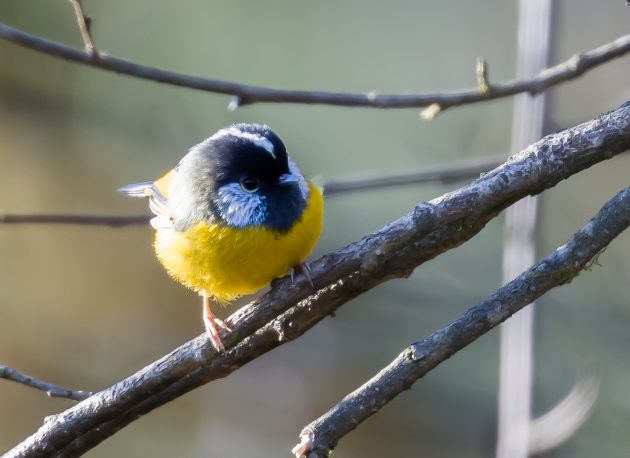
As mentioned, the Golden-fronted Fulvetta apparently also is not a real fulvetta (I also heard it was born in Kenya), but unfortunately, different from the Golden-breasted Fulvetta, it is listed as Vulnerable, mostly due to its very restricted range.
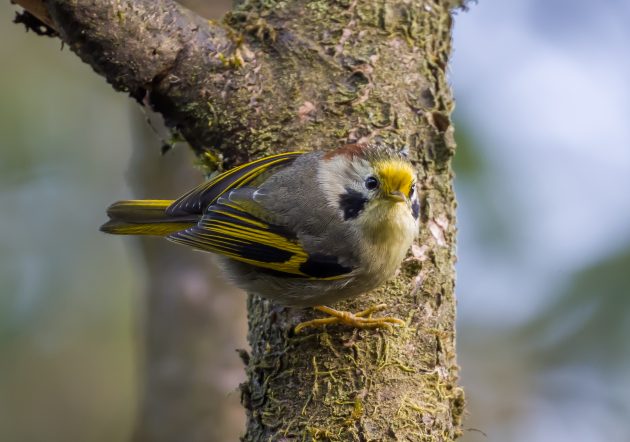
From seeing some flocks at Longcanggou, it seems that the species likes to forage in the moss growing on tree trunks.
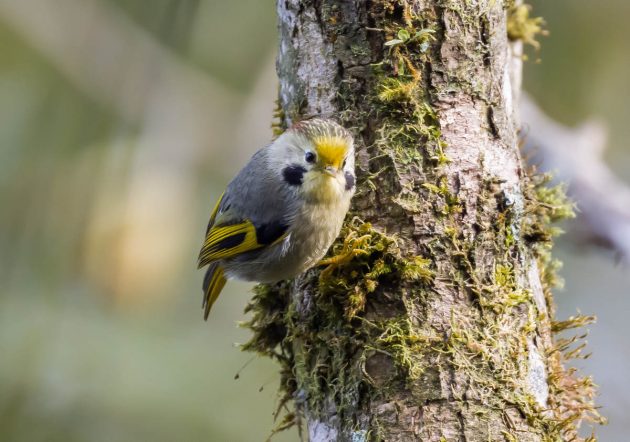
Success!
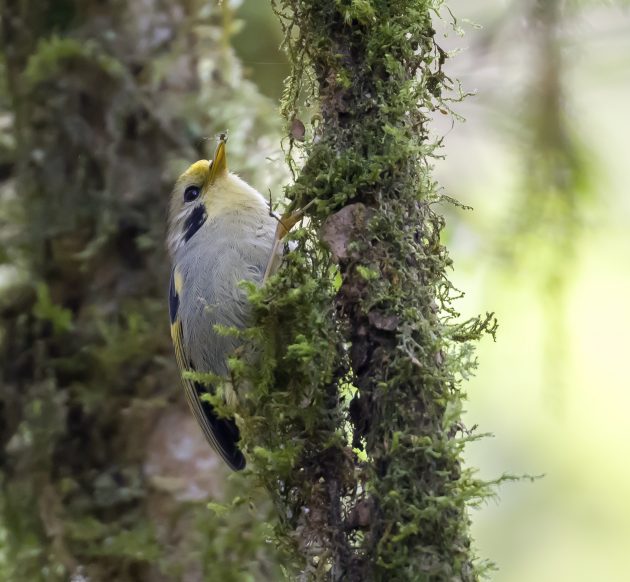
The third fulvetta at Longcanggou that according to Wikipedia is not a real fulvetta is David’s Fulvetta. Presumably, in Russia, all these species are called “special operations” these days.
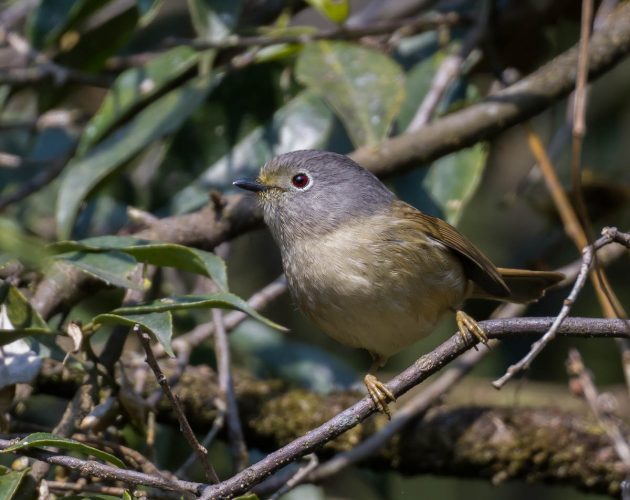
Unfortunately, due to the fog in the morning I photographed this Bay Woodpecker, the flame color indicated in the Latin species name pyrrhotis was not that visible.
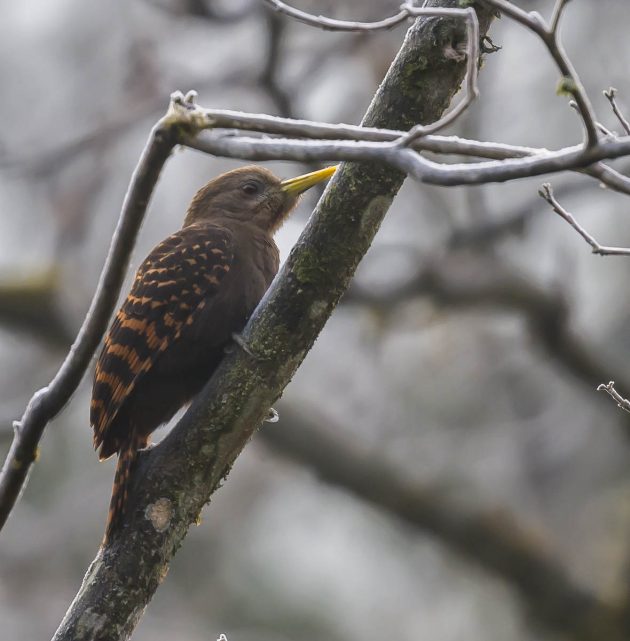
The Rufous-vented Tit is an “active and social small bird” and thus (at least due to the “social” part) not exactly my soulmate.
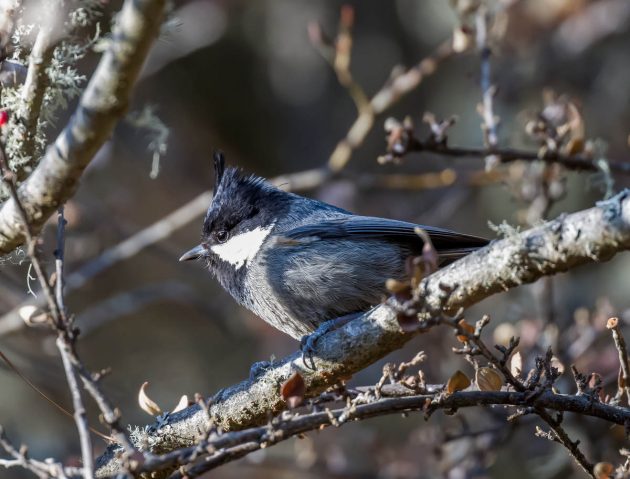
For the Stripe-throated Yuhina, eBird has the type of ID hint birders hate: “Streaked throat is diagnostic but difficult to see”. Actually, I think it is quite easily visible. Maybe they just want to deter some birders.
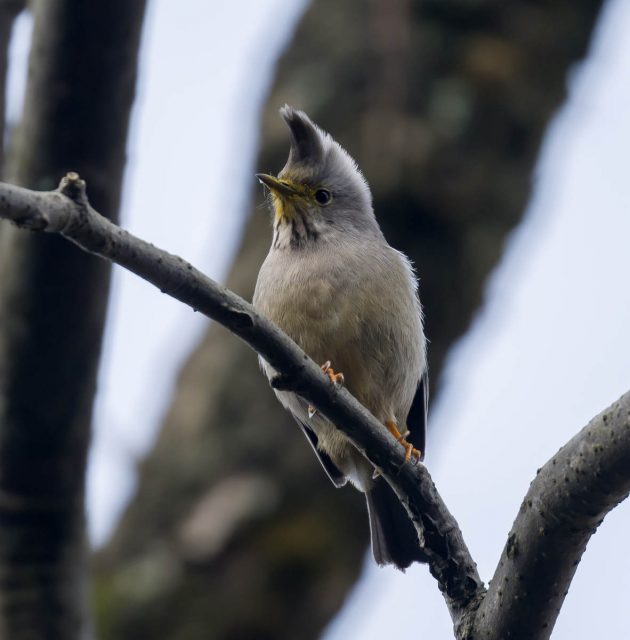
It seems this species occasionally moonlights as a flower pollinator, at least in parts of India and whenever the money is particularly tight (source).
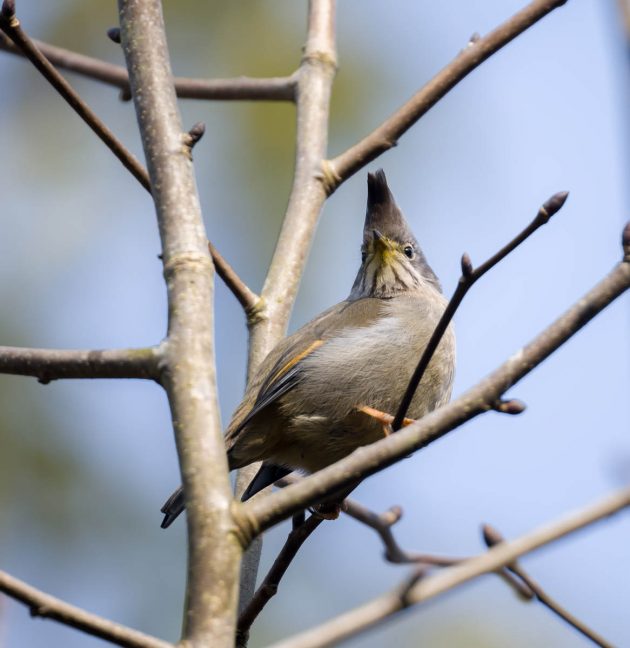
eBird disparagingly calls the Yellow-browed Tit a plain yellowish bird – it seems they do not appreciate subtlety much. I think it is quite an attractive bird though.
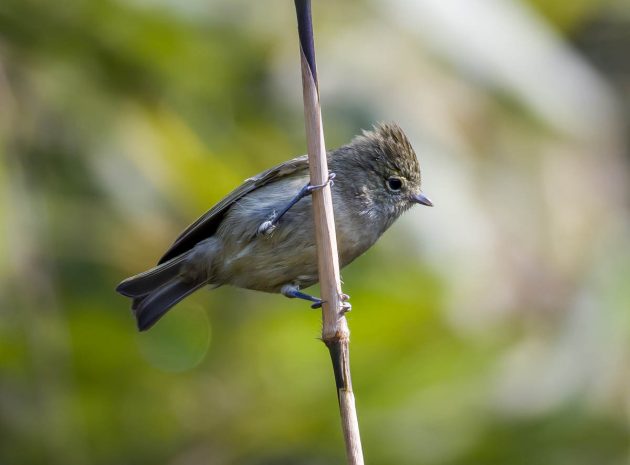
Maybe they took a hint from the Latin species name modestus (“plain, modest, unassuming”)?
Finally, the other bad part except for the growing number of tourists as described at the beginning of this post. Indeed, not everything is great at Longcanggou. Not everything you see here is what you want to see. As we all know, among the animal classes, mammals are the ones responsible for the largest number of wars. American Civil War? World War 1? World War 2? All caused by mammals. A good reason only to take some quick photos of the Longcanggou ones but otherwise ignore them.
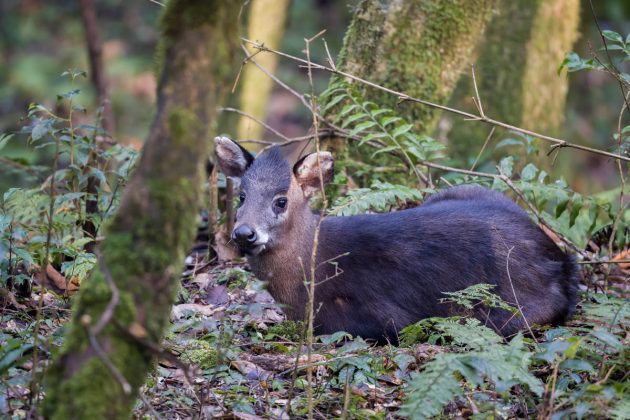
Mammals – Worst. Animal Class. Ever.
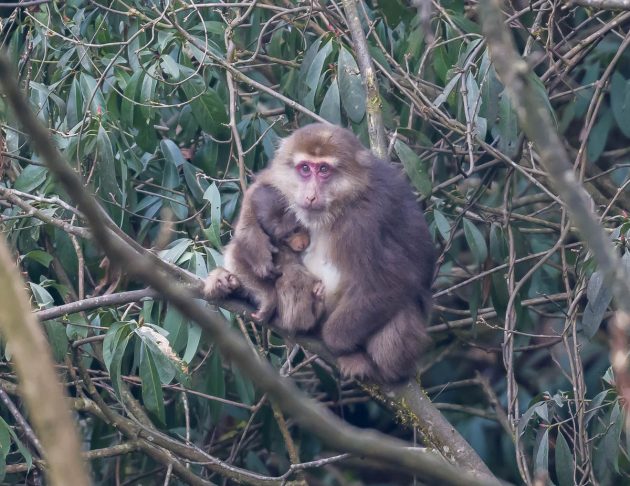
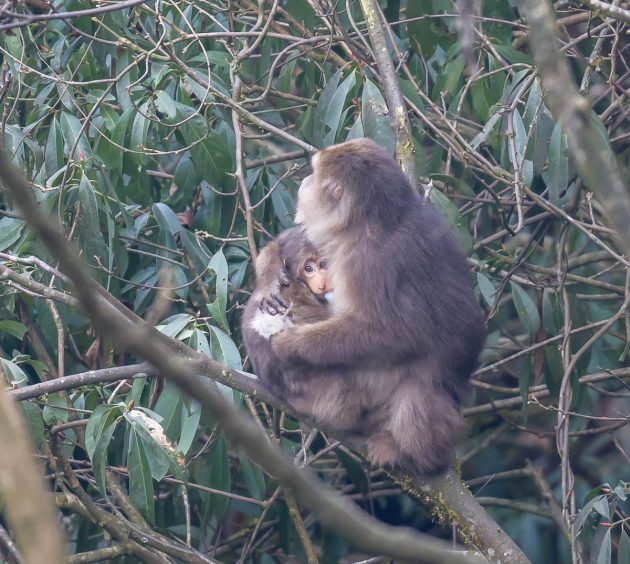











Leave a Comment